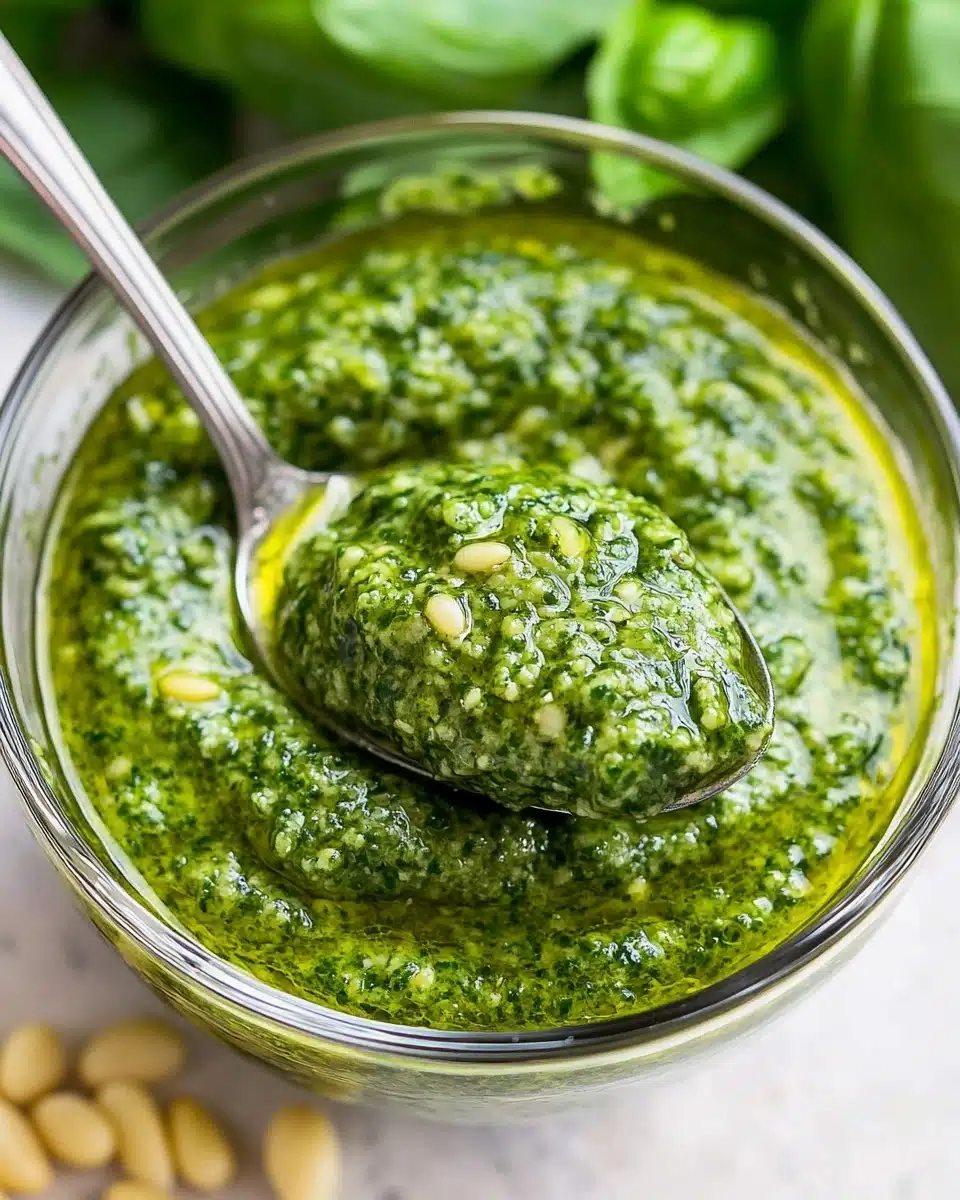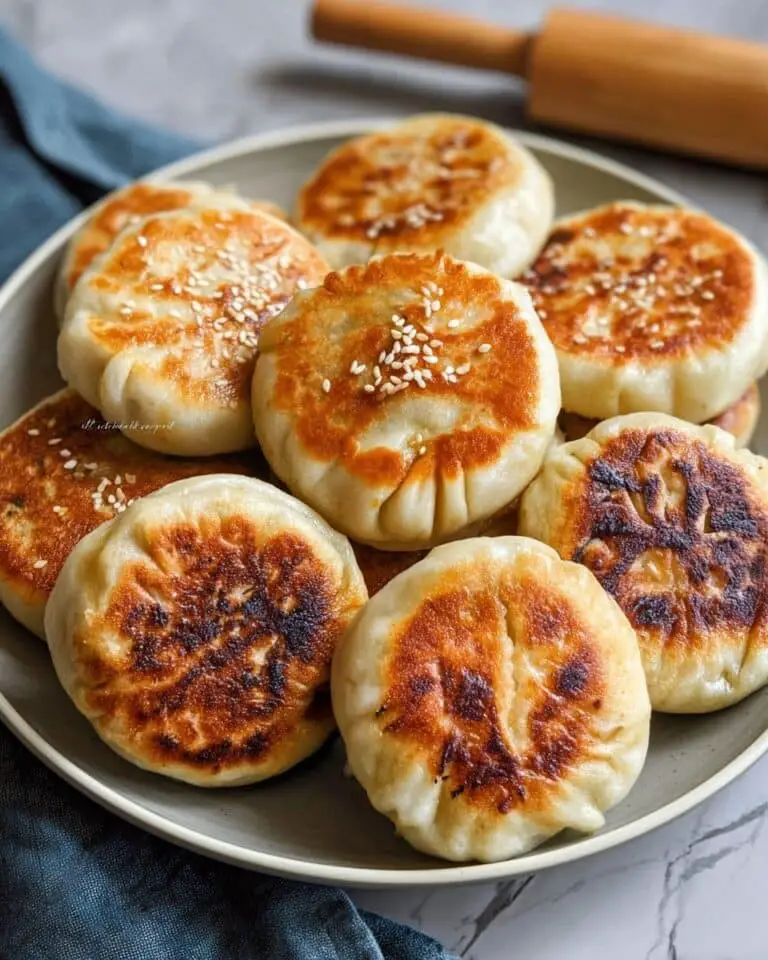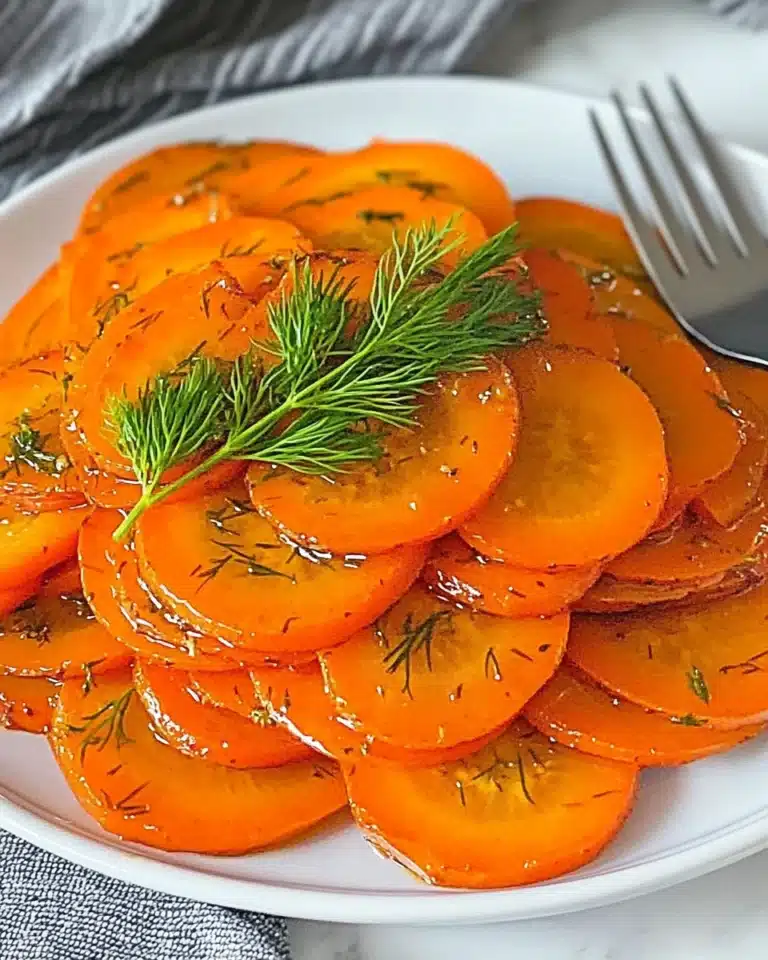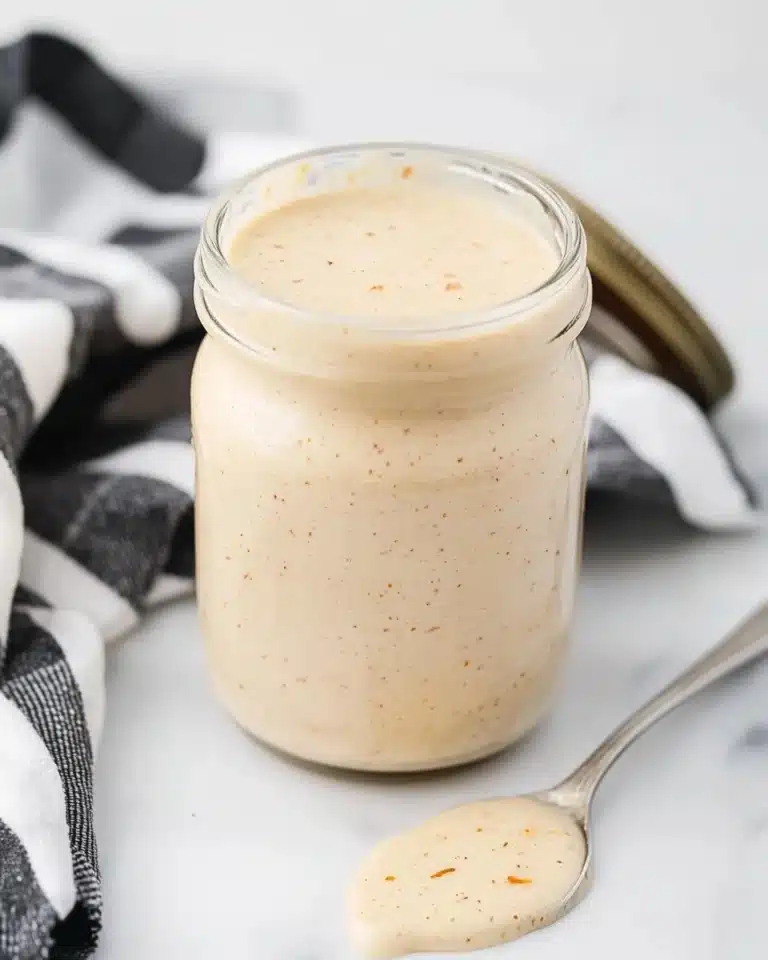The Best Homemade Basil Pesto is the ultimate burst of summer flavor—bright, fresh, and intensely aromatic! Making your own pesto at home is so much easier than you think, and this vibrant green sauce will transform any pasta, sandwich, or veggie dish into something unforgettable.
Why You’ll Love This Recipe
- Fresh and Fragrant: Nothing beats the aroma and taste of pesto made with real, just-picked basil leaves—it’s incredibly lively and aromatic!
- Quick and Easy: From start to finish, the Best Homemade Basil Pesto comes together in about 10 minutes and requires only a handful of wholesome ingredients.
- Customizable Texture: Make it thick and chunky for spreading on toast or ultra-smooth for tossing with hot pasta—the choice is yours every time.
- Better Than Store-Bought: No preservatives, no dull flavors—just pure, bright, nutty, cheesy deliciousness in every spoonful!

Ingredients You’ll Need
This is one of those magical recipes where each simple ingredient really shines. The Best Homemade Basil Pesto relies on ultra-fresh herbs, creamy nuts, and punchy cheese—each balancing and highlighting the next for that signature emerald-green sauce you crave.
- Pine Nuts: Toast these lightly for a richer, deeper flavor—their buttery texture is essential for that classic pesto silkiness.
- Fresh Basil Leaves: Go for basil that’s as fresh as possible and packed tightly—the brighter the leaves, the bolder the pesto!
- Garlic: Just two cloves add the perfect zing without overwhelming the delicate basil.
- Fresh Parmesan Cheese: Finely grated Parmigiano Reggiano (or Grana Padano) melts deliciously into the sauce and adds salty, nutty backbone.
- Salt: A little goes a long way—start with less and add more at the end, as parmesan already brings some saltiness.
- Olive Oil: Choose a good-quality extra-virgin olive oil for a lush, peppery finish that rounds out the flavors beautifully.
Variations
One of the sweetest things about making your own pesto is how easily you can tweak it to fit your pantry, your preferences, or the ingredients you already have. Don’t be afraid to riff on the Best Homemade Basil Pesto and make it your own!
- Nut-Free Pesto: Swap pine nuts for toasted sunflower seeds or pumpkin seeds for a totally nut-free (but still tasty!) version.
- Different Greens: Try blending in baby spinach, arugula, or even a handful of fresh kale to stretch your basil (and sneak in extra greens).
- Cheese Swap: If you’re out of parmesan or need a vegetarian option, use nutritional yeast or pecorino instead!
- Citrusy Brightness: Add a small squeeze of lemon juice or zest for a tangy twist that keeps things super fresh.
How to Make Best Homemade Basil Pesto
Step 1: Toast the Pine Nuts
Set a small, dry skillet over medium-low heat and add the pine nuts, stirring often. You’re looking for them to become lightly golden and fragrant—this usually takes just 2-3 minutes. Keep a close eye (nuts burn fast!), then transfer them to a plate to cool while you prep the rest.
Step 2: Blend the Base Ingredients
In the bowl of a food processor or blender, combine the fresh basil leaves, toasted pine nuts, peeled garlic cloves, and grated parmesan cheese. Give everything a few pulses until you have a rough, crumbly paste—the basil should look chopped, but not mushy at this stage.
Step 3: Add the Olive Oil and Salt
With the machine running, slowly drizzle in the olive oil (start with ½ cup), and blend until everything turns into a luscious, bright green sauce. Add ½ teaspoon of salt and pulse to combine, tasting as you go. For a thinner pesto, add up to ¼ cup more oil, blending again until you get the consistency you love.
Step 4: Taste and Adjust
Spoon out a little taste and see if your Best Homemade Basil Pesto needs another pinch of salt or a drizzle more oil. Blend or pulse as needed, and scrape down the sides to make sure everything is silky and evenly mixed. That’s it—your pesto is ready to use!
Pro Tips for Making Best Homemade Basil Pesto
- Basil Preservation Secrets: If your basil looks a little wilted, soak leaves briefly in very cold water to revive their color and crunch before blending.
- Toast for Maximum Flavor: Toasting pine nuts isn’t optional—those few golden minutes bring out a deep, almost buttery flavor that makes each bite unforgettable.
- Oil Matters: Use a fruity, grassy extra-virgin olive oil for a fresher, brighter taste—less expensive oils can make your pesto taste flat or bitter.
- Batch and Store: Make a double batch and freeze in ice cube trays—you’ll always have Best Homemade Basil Pesto ready for weeknight dinners or spontaneous snacking!
How to Serve Best Homemade Basil Pesto
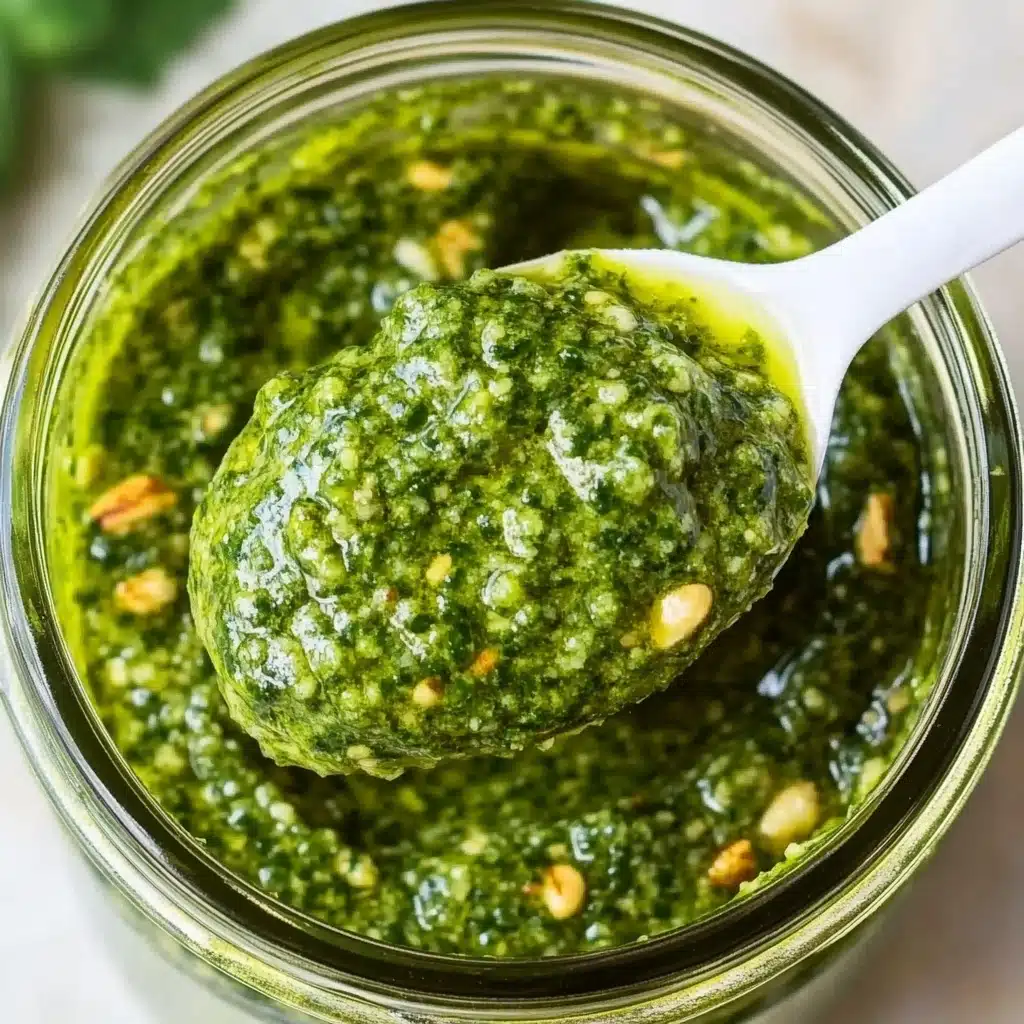
Garnishes
Give your finished pesto a final flourish with a sprinkle of extra parmesan, a scattering of toasted pine nuts, and a drizzle of really good olive oil—these fresh garnishes make every serving look chic and inviting.
Side Dishes
Best Homemade Basil Pesto is the ultimate supporting actor for just about everything—toss it with warm pasta, dollop it on grilled chicken, spread it on sandwiches, or spoon it over roasted veggies and salads for instant restaurant-level flavor.
Creative Ways to Present
Get playful with how you serve it—swirl pesto into Greek yogurt for a dip, spoon it into little jars as edible gifts, or top crostini with pesto and roasted tomatoes for a colorful appetizer spread that’s perfect for sharing.
Make Ahead and Storage
Storing Leftovers
Store any leftover Best Homemade Basil Pesto in a jar or airtight container with a thin layer of olive oil on top to lock in that vibrant green color—pop it in the fridge and it’ll stay fresh for about 5 days.
Freezing
Pesto freezes beautifully! Portion it into ice cube trays, freeze solid, then transfer to a zip-top bag for up to 3 months—just thaw what you need for the perfect fresh hit of summer any time of year.
Reheating
You really don’t want to heat pesto—just let it come to room temperature and stir before using. If tossing with hot pasta, let the heat of the noodles gently warm the sauce for the best flavor and color.
FAQs
-
What can I use instead of pine nuts in pesto?
Walnuts, almonds, or even cashews make excellent substitutes in the Best Homemade Basil Pesto. Toasted sunflower or pumpkin seeds are also a great nut-free alternative that still bring plenty of texture and flavor.
-
Can I make pesto without a food processor?
Absolutely! If you have a high-powered blender, that works well—otherwise, go traditional and use a mortar and pestle for a slightly chunkier (and extra aromatic) pesto experience.
-
Why does my homemade pesto sometimes turn brown?
Basil oxidizes quickly after chopping, which can dull both its color and taste. To keep Best Homemade Basil Pesto vibrant, cover the surface with olive oil, press plastic wrap tightly onto its surface, and store immediately in the fridge.
-
Is this recipe gluten-free and vegetarian?
The sauce itself is naturally gluten-free. For a vegetarian version, use a parmesan alternative that’s made without animal rennet (look for the label).
Final Thoughts
If you’re looking for a fresh, easy, and absolutely flavor-packed staple, you have to try this Best Homemade Basil Pesto. Whether tossed with pasta, swirled through soup, or dolloped on literally anything, this is one recipe you’ll come back to all summer long (and well beyond!).
Print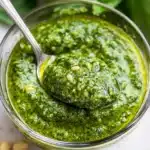
Best Homemade Basil Pesto Recipe
- Prep Time: 10 minutes
- Total Time: 10 minutes
- Yield: 8 servings
- Category: Sauce
- Method: Blending
- Cuisine: Italian
- Diet: Vegetarian
Description
Learn how to make the best Homemade Basil Pesto with this easy recipe. Fresh basil, garlic, pine nuts, and parmesan cheese come together to create a flavorful and versatile sauce that’s perfect for pasta, sandwiches, or as a dip.
Ingredients
Pine Nut Mixture:
- 1/4 cup pine nuts
Pesto:
- 2 cups packed fresh basil leaves
- 2 cloves garlic
- 1/2 cup fresh parmesan cheese
- 1/2 – 1 teaspoon salt (to taste)
- 1/2 – 3/4 cup (118-177ml) olive oil
Instructions
- Toast Pine Nuts: Place pine nuts in a small skillet over medium-low heat. Stir often until lightly browned. Remove from heat and cool.
- Blend Ingredients: In a food processor, combine basil, toasted pine nuts, garlic, and parmesan. Pulse into a paste. Add 1/2 teaspoon salt and pulse again.
- Add Olive Oil: With the processor running, slowly pour in 1/2 cup olive oil. Blend until emulsified. For a thinner pesto, add more olive oil as desired.
Nutrition
- Serving Size: 1 serving
- Calories: 180
- Sugar: 0.5g
- Sodium: 320mg
- Fat: 18g
- Saturated Fat: 3g
- Unsaturated Fat: 15g
- Trans Fat: 0g
- Carbohydrates: 2g
- Fiber: 1g
- Protein: 3g
- Cholesterol: 5mg

